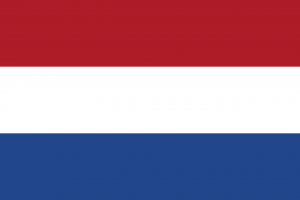Difference between revisions of "Language/Dutch/Grammar/Prepositions-of-Place-and-Time"
m (Quick edit) |
m (Quick edit) |
||
| Line 119: | Line 119: | ||
===How to use op in Dutch: preposition - YouTube=== | ===How to use op in Dutch: preposition - YouTube=== | ||
<youtube>https://www.youtube.com/watch?v=9Rq3EQCa9FU</youtube> | <youtube>https://www.youtube.com/watch?v=9Rq3EQCa9FU</youtube> | ||
==Related Lessons== | |||
* [[Language/Dutch/Grammar/Comparison-of-Adjectives-and-Adverbs|Comparison of Adjectives and Adverbs]] | |||
* [[Language/Dutch/Grammar/Present-Tense-and-Regular-Verbs|Present Tense and Regular Verbs]] | |||
* [[Language/Dutch/Grammar/Questions|Questions]] | |||
* [[Language/Dutch/Grammar/How-to-use-“to-speak”-in-Dutch|How to use “to speak” in Dutch]] | |||
* [[Language/Dutch/Grammar/The-Dative-Case-in-Dutch|The Dative Case in Dutch]] | |||
* [[Language/Dutch/Grammar/0-to-A1-Course|0 to A1 Course]] | |||
* [[Language/Dutch/Grammar/Greetings-in-Dutch|Greetings in Dutch]] | |||
* [[Language/Dutch/Grammar/Modal-Verbs|Modal Verbs]] | |||
* [[Language/Dutch/Grammar/How-to-use-“must”-in-Dutch|How to use “must” in Dutch]] | |||
* [[Language/Dutch/Grammar/Vowels-and-Consonants|Vowels and Consonants]] | |||
{{Dutch-Page-Bottom}} | {{Dutch-Page-Bottom}} | ||
Revision as of 13:03, 12 March 2023
As a Dutch language teacher with 20 years of teaching experience, I know that prepositions can be one of the trickiest parts of learning a new language. However, with the right guidance and practice, anyone can master them. In this lesson, we will focus on prepositions of place and time in Dutch.
Prepositions of Place
Prepositions of place are used to indicate where something or someone is located in space. Below are the most common prepositions of place in Dutch:
- Achter (behind)
- Voor (in front of)
- Naast (next to)
- Op (on)
- In (in)
- Onder (under)
- Tussen (between)
To use prepositions of place correctly, it is essential to learn how to use them in sentences. Here are a few examples:
| Dutch | Pronunciation | English |
|---|---|---|
| De kat zit op de stoel. | de kɑt zɪt ɔp də stul | The cat is sitting on the chair. |
| Ik woon tussen de supermarkt en het park. | ɪk woːn tʏsə(n) də sʏpərmɑ(r)kt ɛn hɛt pɑrk | I live between the supermarket and the park. |
| De boeken zijn onder de tafel. | də bukə(n) zɪn ɔndər də taːfəl | The books are under the table. |
In the examples above, you can see how prepositions of place have been used with different nouns.
Prepositions of Time
Prepositions of time are used to indicate when an event occurred or will occur. Below are the most common prepositions of time in Dutch:
- Om (at)
- Tegen (around)
- Over (in)
- Voor (before)
- Na (after)
- Sinds (since)
- Vanaf (from)
To use prepositions of time correctly, it is essential to learn how to use them in sentences. Here are a few examples:
| Dutch | Pronunciation | English |
|---|---|---|
| Ik sta om 7 uur op. | ɪk staː ɔm zɛvə(n) yːr ɔp | I get up at 7 o'clock. |
| De film begint om 20 uur. | də fɪlm bəxɪnt ɔm twɛntə(n) yːr | The movie starts at 8 pm. |
| We gaan naar het strand over twee weken. | wə ɣaː(n) naːr hɛt strand ɔvər tʏsə weekə(n) | We're going to the beach in two weeks. |
In the examples above, you can see how prepositions of time have been used to indicate different time expressions.
Prepositions of Place and Time in Combination
In Dutch, prepositions of place and time can be combined to indicate both where and when something occurred or will occur. Below are a few examples:
- Op maandagochtend (on Monday morning)
- In de zomermaanden (in the summer months)
- Voor de kerk (in front of the church)
- Na het eten (after dinner)
To use prepositions of place and time in combination correctly, it is important to learn how to use them in context. Here are a few examples:
| Dutch | Pronunciation | English |
|---|---|---|
| We gaan op vrijdagavond naar de bioscoop. | wə ɣaː(n) ɔp vrɛɪdɑvɔnt naːr də biɔskoːp | We're going to the cinema on Friday evening. |
| Ik ben in de lente geboren. | ɪk bɛn ɪ(n) də lɛntə ɣəboːrə(n) | I was born in the spring. |
| De kinderen spelen na schooltijd in het park. | də kɪndərə(n) speːlə(n) naː skoːltɛit ɪ(n) hɛt pɑrk | The children play in the park after school time. |
In the examples above, you can see how prepositions of place and time in combination have been used to indicate different time expressions and spatial location.
Tips and Tricks
- To remember prepositions of place, think of where objects are located and what is around them. - To remember prepositions of time, think of important dates and events and use them as reference points. - Practice making your own sentences using prepositions of place and time in different contexts.
I hope this lesson has been helpful in guiding you through prepositions of place and time in Dutch. Stay tuned for our next lesson on reflexive and possessive pronouns.
Sources
Videos
Om, In, Op | Dutch Prepositions and Time | Dutch Grammar - YouTube
How to use op in Dutch: preposition - YouTube
Related Lessons
- Comparison of Adjectives and Adverbs
- Present Tense and Regular Verbs
- Questions
- How to use “to speak” in Dutch
- The Dative Case in Dutch
- 0 to A1 Course
- Greetings in Dutch
- Modal Verbs
- How to use “must” in Dutch
- Vowels and Consonants
